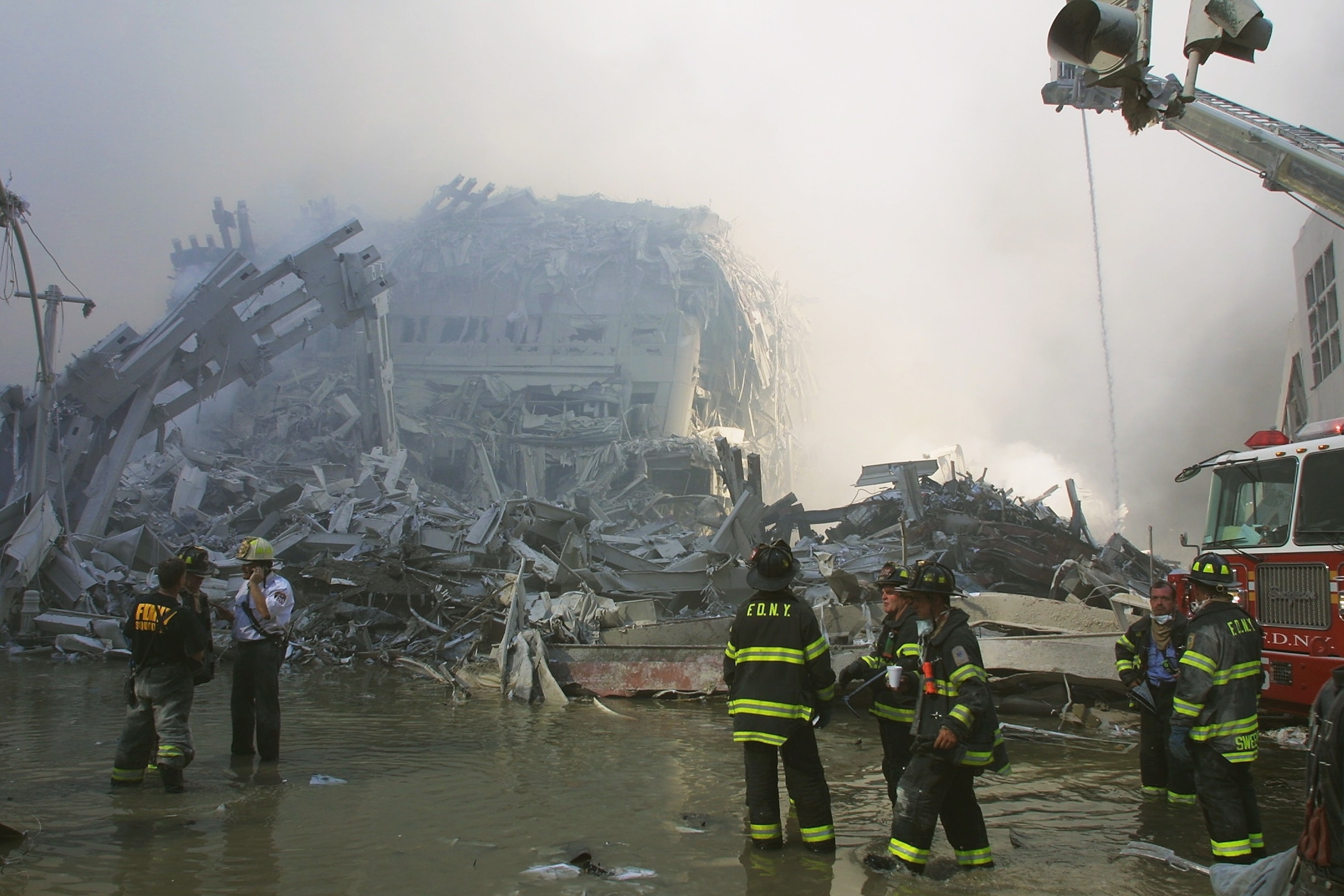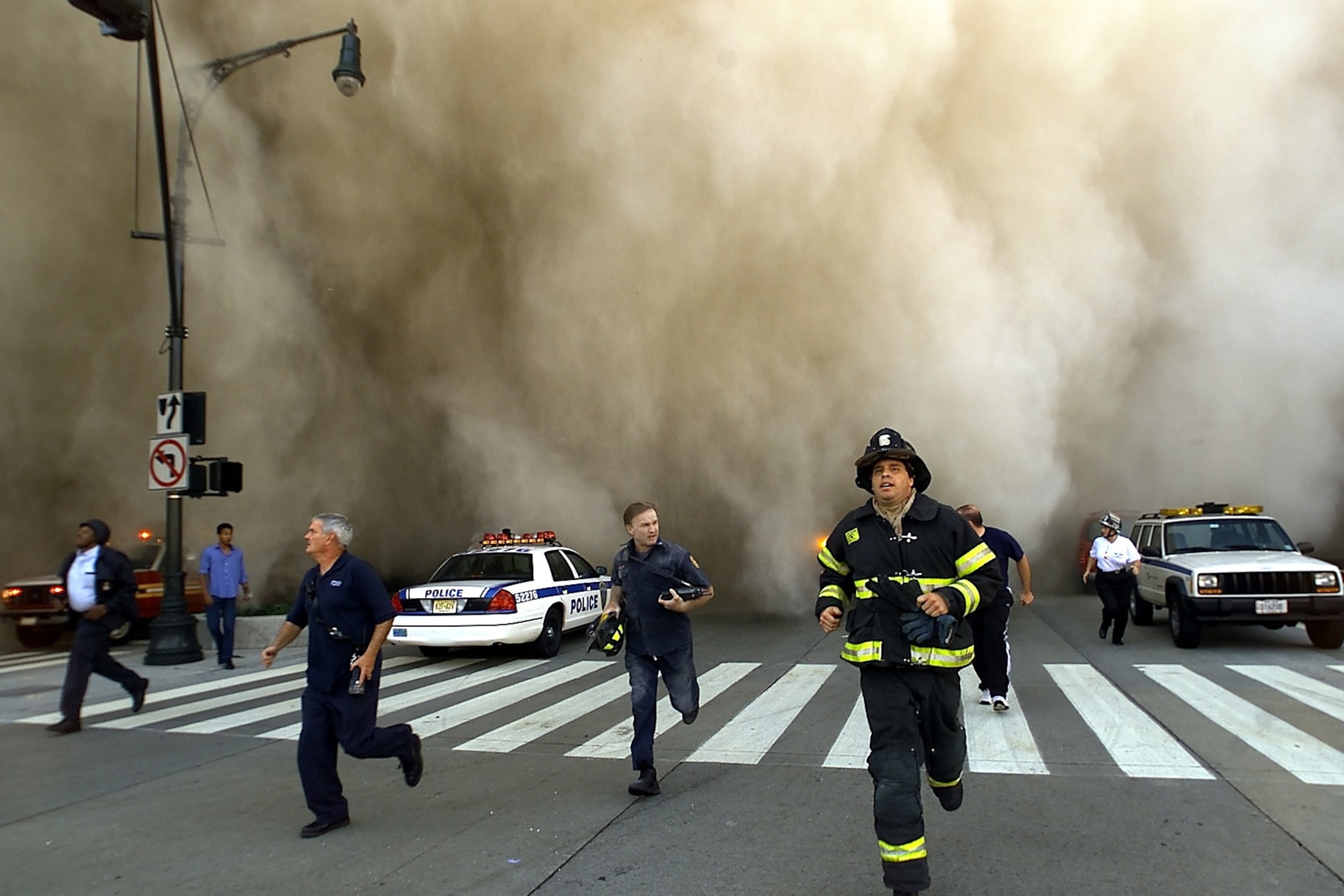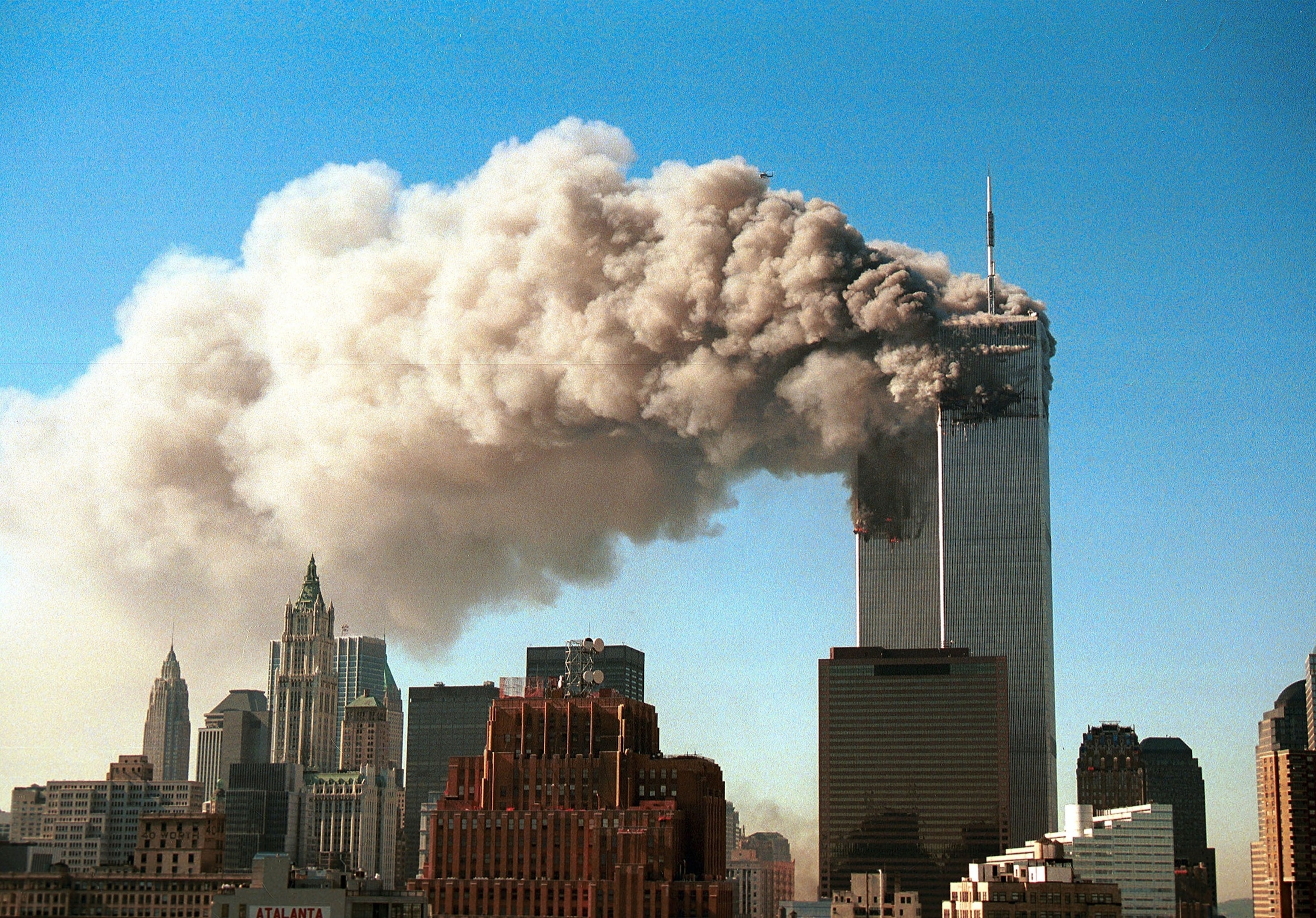Osama Bin Laden had caused the United States to be a priority of its Al-Qaida terrorist organization. Al Qaida translates from Arabic as “the base”, a base that Bin Laden hoped to use to influence Muslims around the world to oppose Western influences and states and establish fundamentalist Islamic regimes. Bin Laden’s reasons were based on his extremist interpretation of Islamic theology, resentment on the foreign policy of the United States in the Middle East and the desire to overthrow the existing world order.
The “base” was called because it was a centralized and hierarchical organization That provided funds, training and logistical support for terrorism worldwide, even for the so -called “plans operation” of September 11, 2001.

New York City Firefighters work at the World Trade Center after two kidnapped planes crashed into the Twin Towers, on September 11, 2001, in New York.
Ron Agam/Getty Images
To embolden and support his organization, Bin Laden was often recorded with messages aimed at his target audience, established training centers in Afghanistan, had an expansive financing network that included rich individuals, emails, mosques and other complex forms of raise funds.
Bin Laden, through the Al-Qaida terrorist organization, attacked the United States for almost a decade before September 11 attacks in 2001, using this large and expansive infrastructure. While 1998 of Al Qaida Attacks against United States embassies in Africa and 2000 Attack against the Guided missile destroyer of the US Navy. Uu. USS Cole If I was successful, the largest operation of the organization was the attacks of September 11, 2001 against the World Trade Center in New York City, the Pentagon, and the frustrated attack against Washington, DC, which ended with the clash of United Airlines 93 in Shanksville, Pa., All which included hiring and training of terrorist operations and expenses, and time.
Bin Laden took almost two years to gather the necessary resources and training for those attacks 24 years ago, something that could be done today.
Bin Laden and September 11 attacks lacked something that current terrorists, criminals and violent extremists have access to: Internet and, specifically, the dark website. After the attacks of September 11, as the United States was increasing to attack Al Qaida, “the base” and affiliated organizations began to move on to a more decentralized and encouraged form of terrorism and violence.

Police and firefighters flee from a huge cloud of dust when the World Trade Center tower collapsed after the terrorists crashed two kidnapped planes in the Twin Towers, on September 11, 2001, in New York.
Jose Jimenez/First Hour/Getty Images
The terrorists expanded their use of the Internet for a wide range of activities, including planning, radicalization and recruitment, propaganda dissemination and fundraising. While the Internet facilitates covert planning through tools such as encrypted messages, it also serves as a platform for psychological warfare, spreading misinformation and images to incite fear. This online presence includes social media platforms used for propaganda, communication and recruitment, creating a challenge for governments and platforms to manage the propagation of extremist content with the hope of preventing potential violence.
In 2004 studyThe United States Peace Institute said that hundreds of terrorist groups had migrated online, using a tool destined for better communication for often disastrous purposes. Almost 20 years later, a 2022 study entitled Terrorism and Internet: How dangerous is online radicalization? He highlighted how online radicalization had become a clear threat that can metastasis in dark corners, often unnoticed.
The main use of the Internet by these terrorist groups, encouraging and radicalizing followers and enviving fear with propaganda, is something that Bin Laden would have had to do with the videos played by the news. Similarly, the Internet has made fund collection much easier with the use of online payment methods, which are easy to configure and difficult to track. And now, with the advent of generative artificial intelligence (AI), terrorists have another tool at their disposal.
According to a National Security Hearing Committee of the US House of Representatives. UU. Background notice Earlier this year, “Genai is rapidly emerging technology that can produce numerous types of content, such as text, images or audio, when a user, foreign terrorist organizations actively seek ways of exploiting Genai to support a variety of violent extremist tactics, techniques and procedures, such as the use of chatsbots to AI, interact with possible recruits.” “

The smoke is poured from the twin towers of the World Trade Center after they were beaten by two kidnapped planes in a terrorist attack, on September 11, 2001, in New York.
Robert Giroux/Getty Images
“Desk and mobile messaging applications based on foreign cloud such as Tiktok and Telegram have allowed their platforms to become a cultivation broth for radical extremism,” the notice continued. Essentially, terrorist groups have been able to arm themselves on the Internet and encourage violence in a way that they could not have imagined on September 11.
Although terrorism is not new, the use of the Internet, and now the AI, magnifies the capacities and scope of the terrorist groups that used to trust notes and video tapes scattered to carry out their businesses. It seems reasonable to assume that if Bin Laden had had access to today’s technologies, September 11 attacks may have been precursors of additional and more frequent mortal attacks.
The threats we face today are more complex, without borders and technologically advanced than ever. Anti-terrorist strategies must continue to adapt to meet this evolutionary battlefield, taking advantage of not only military and intelligence tools, but also public-private associations with technological platforms, monitoring of AI and global diplomacy.
The legacy of September 11 must be more than I remember: it must be surveillance. As we honor the almost 3,000 lost lives that day, and those first to respond that have died in the years since then, we must remain determined to face the face of extremism in constant change, now armed with digital weapons and invisible armies.
Richard F. Frankel is an ABC news collaborator and former special agent by the FBI. Donald J. Mihalek is ABC news collaborator, retired senior secret service agent and regional field training instructor that served in the details of the president and presidential transitions. The opinions expressed in this story are yours and not those of ABC News.




